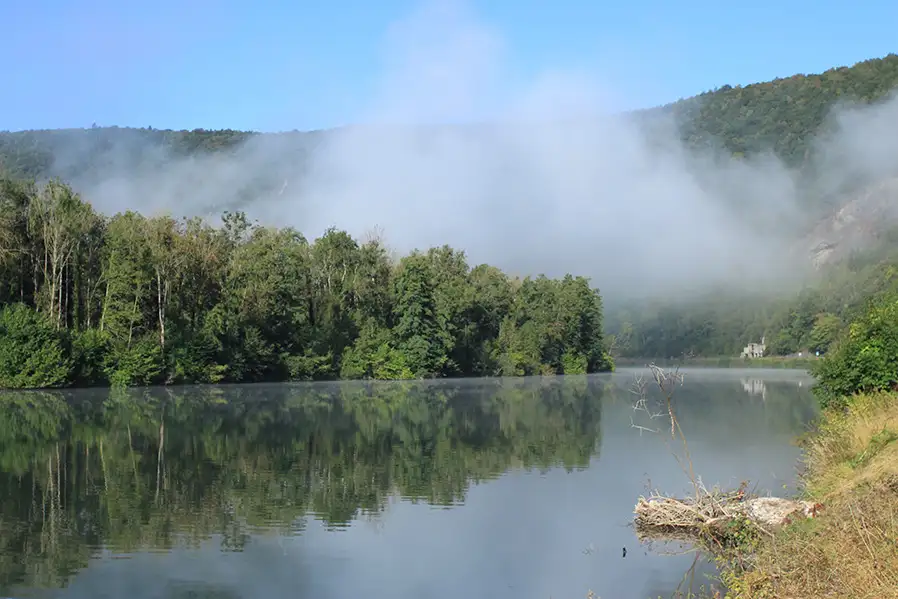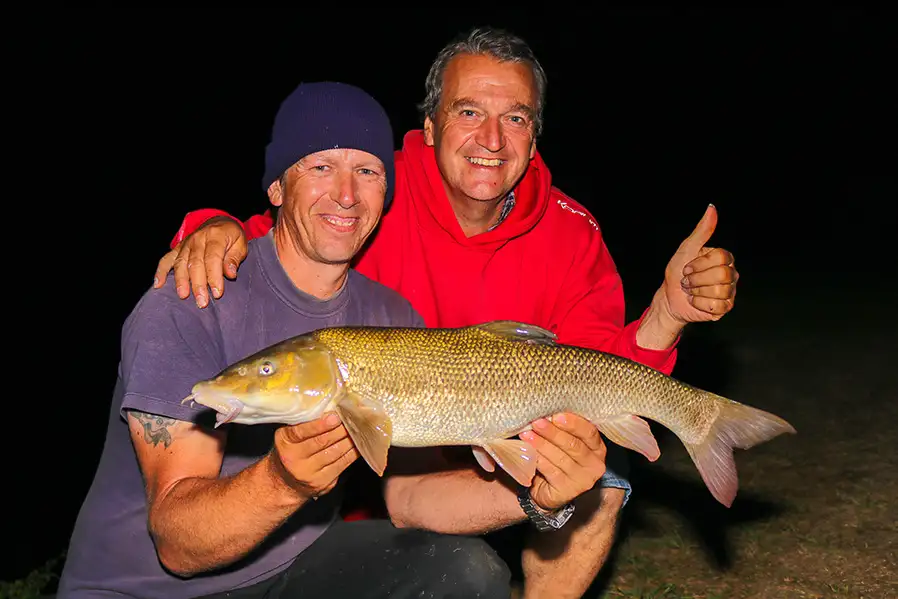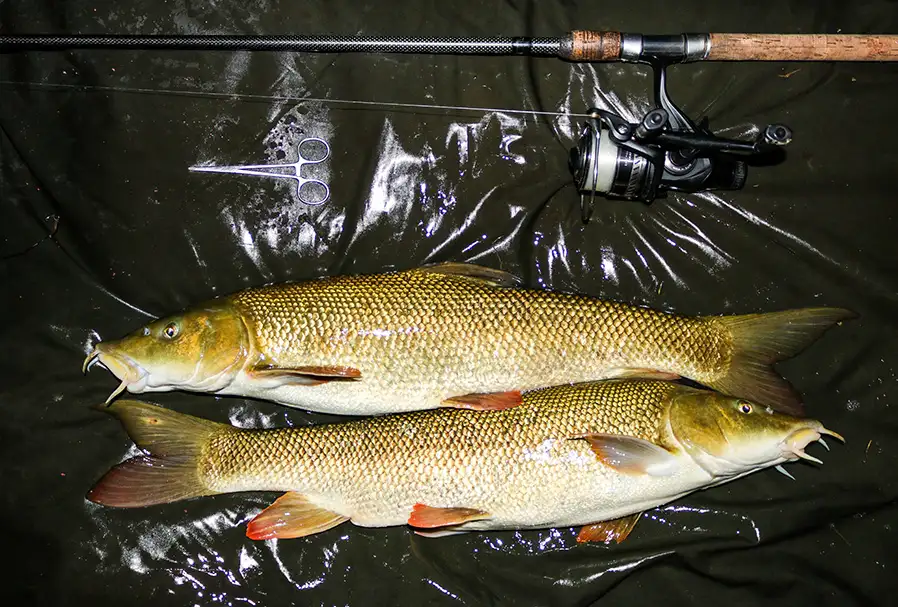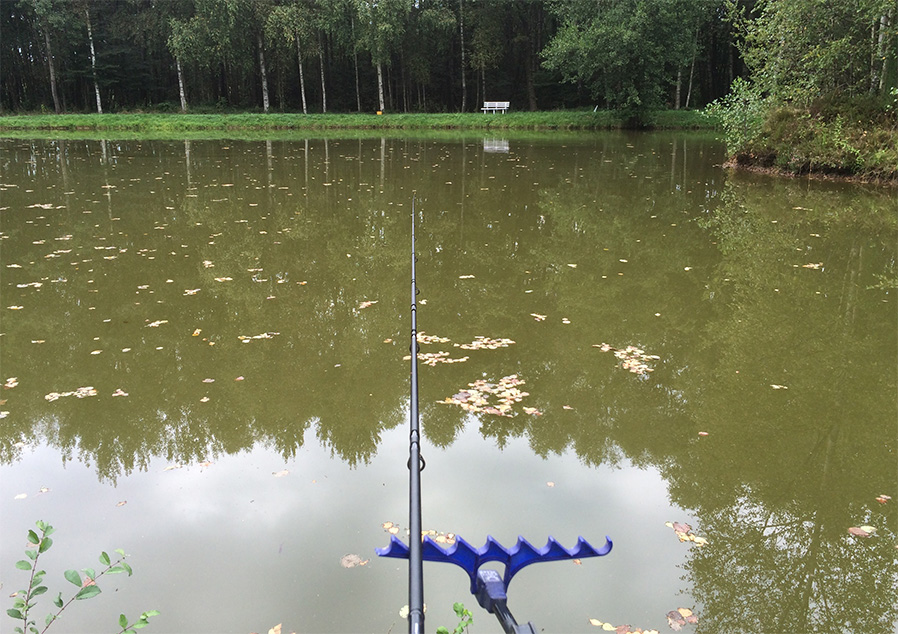This is a demo store. No orders will be fulfilled.
Commercial Break - Ade Kiddell

Paul Floyd, a recent visitor to Kingfisher Maison and on his first trip to catch French barbel, decided to target the barbel from early evening through to mid morning and then catch up on his sleep before the next night’s session. Paul’s efforts were well rewarded and, after a slow start with only one barbel to show at the end of the first session, he went on to land over 100 barbel over the next four nights, with the best night producing 35 barbel.

I am often asked if I use one or two rods when barbel fishing. In general, I use two, although this changes depending on the scenario. I wouldn't use two if I was fishing a small river needing a much more stealthy approach, for example, and I also only use one when I am fishing bait straight on the hook rather than hair rigged. The other time I only use one is when the fish are really feeding hard. This is because, if you were to fish with two rods, you’ll often find that you have a hooked fish on both rods. In this instance, I fish with one rod but have the other ready baited. Once I land a fish I’ll cast the prepared rod whilst it’s resting. Barbel feed in spells and, as the shoal moves in and out of the feeding zone, it’s essential to keep a baited rod in the water. Often two rods is one too many and, if you are unsure, remember one rod fished properly is better than two rods fished badly.
As the nights start to lengthen, the barbel start to pack on some weight for the winter ahead and it’s my favourite time of year to catch them. As the season progresses, a mid-8lb fish can tip the scales over the magic double.

Don't ignore maggots and castors as a bait for barbel between now and the end of the river season in March. If the river is high and coloured after rain then it’s a big smelly bait you want, but if the river is low and clear then I rate fresh red maggots above any other bait during day light hours. Simply clean the maggots off and add a good dose of curry powder or garlic salt; barbel can’t resist them and I have taken some very big barbel when others are struggling with pellets and boilies.
Since I have been in France, I have to admit to missing a bit of lake fishing for bream, tench and carp so when the opportunity arrived for a commercial break I jumped at the chance. Not a huge fan of carp puddles I was pleasantly surprised when my French mate, Steven, took me to his local commercial. It turned out turned out to be a well matured small lake, with an island and plenty of bays to provide fish holding spots. Steven had fished it a few times before with pole and various hook baits but the fish were winning as some decent size carp destroyed his pole rigs.

Commercial fisheries, as we know them in the UK, are few and far between in Europe. There are a few in France, Belgium and Holland but, because of this lack of venues, the angling skills required to tackle these type of venues are lacking. Steve had asked for my help and my advice was easy; put the pole away and fish a small method feeder. I like the Preston ones, which require a mould to form the bait ball around the feeder. The trick with getting method feeding right is the preparation of the pellets to mould around the feeder. It’s not complicated and I use a carp feed pellet, something like Sonubaits F1. Size wise, I prefer 4mm but 2mm or 6mm will work, too. Avoid high fish oil type pellets as they can be too sticky and hard to get out of the mould. The important bit is to soak your chosen pellet for the correct amount of time. I use the one minute rule; one minute per millimetre of pellet. By this logic, using 4mm pellets I’ll soak them for four minutes and then drain them. I also recommend that you leave them along for another 10 minutes or so and then bag them ready for fishing.
We chose a swim which gave us access to two likely looking fish holding areas. The first was the tip of an island and the second was an area under a tree along the bank. Steve is a good angler so he understands the importance of casting accurately, for this type of fishing it’s key to get the fish competing for food in an area not much bigger than a dustbin lid. With the feeder set up and a 4inch hook link with a hair rigged bait band attached, we chose to use Sonubaits Band-ums in F1 flavour to match the feed.

The first two casts produced nothing, but on the third cast a nice bream came to the net, quickly followed by another bream then a couple of nice size crucians. Judging by the amount of disturbance in the swim something a bit bigger had found our free offerings and, when the tip pulled round and kept going, the fun began. My French friend was up to the challenge and a nice mid-double carp was the eventual result. Fish this size will destroy pole rigs for fun but with 8lb mainline and a similar hook link matched to a soft-ish feeder rod then most fish will be landed.
In the end I didn't get much fishing done as I spent most of the time with Steve, who ended up with five good carp, half a dozen crucians, a few bream and, most importantly, not one fish lost. Steven is now a commercial convert. The good news is he has been watching me catch plenty of barbel and, although the French in general see barbel as a nuisance species, he has decided that his next quest is barbel!
